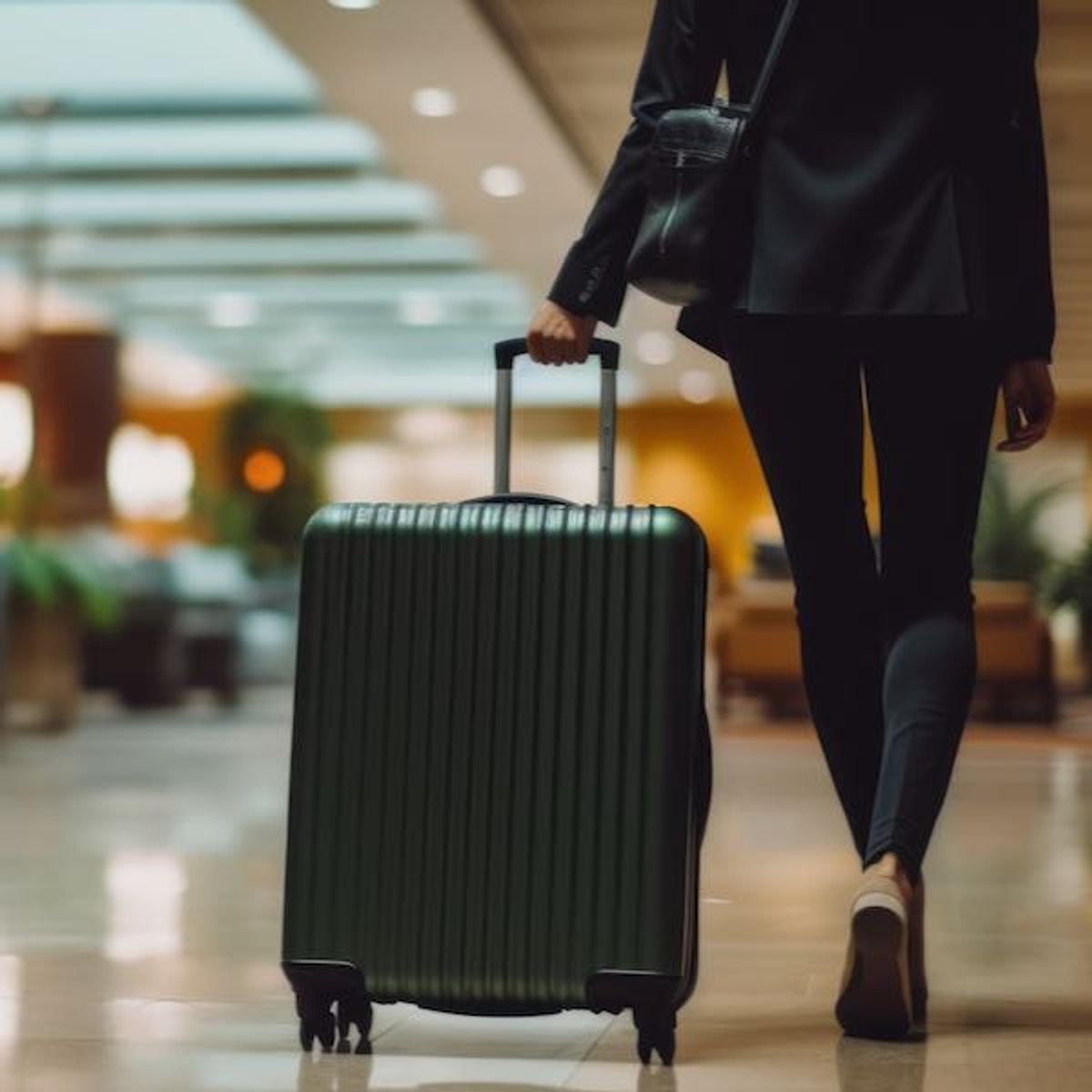Travel
RFP 2025: Choosing the right rate type

The negotiating season for 2025 hotel rates has begun, presenting travel managers with the annual challenge of finding the right balance of rate types for their accommodation programme.
“I treat rate types like a product. It’s a question of putting the right one in the right place at the right time for the right reason,” says Danny Cockton, vice president global travel services for the energy and materials consulting and engineering company Wood.
But making those calls about time, place and reason is tough, perhaps even more so this year following reports that hotels are pushing dynamic rates (an agreed discount for the corporate client off the best available public rate) harder than ever in preference to fixed corporate rates.
Fixed (also known as static) rates fall into two categories: either with last room availability (LRA) or non-last room availability (NLRA). Other options play a lesser role in the mix, including chainwide discounts and agency rates, but the three key negotiated rate types are LRA, NLRA and dynamic. So, which is best for you?
LRA – The buyer’s favourite
LRA is “still the most desirable rate type for many corporates,” says Cameron Spence, global hotel practice line lead for American Express Global Business Travel.
The appeal for buyers is obvious: a known price travellers can always access. But there are trade-offs. The first is that an LRA rate commands a premium, varying from a couple of percentage points more than the NLRA rate to ten per cent-plus, according to Spence.
The second disadvantage is that hotels dislike LRA deeply – so much, in fact, that some are trying to refuse them. Jutta Moore, managing director of Moore Hotel Consulting, who specialises in revenue management strategy, gives a simple example why. “The hotel could be selling at 250 and down to its last ten rooms,” she says. “Suddenly you get a curve ball of five rooms coming in at a corporate rate of 170.”
The buyer’s capacity to secure an LRA is an arm-wrestle determined by factors including whether the hotel can expect higher-yielding custom from other segments, such as leisure, plus the buyer’s spending power and reliability. “By the time you come to your next RFP, if you’ve not delivered the volumes they were expecting, the hotel is most likely going to raise the LRA rate or lean back on to NLRA or dynamic,” says Spence. “So if a property is key to you in achieving an LRA, do as much as you can to drive volume to it.”
But Jeong Pyon and André Santos, directors of hospitality solutions for APAC and EMEA respectively for the revenue management system provider Duetto, warn that hotels are becoming less persuadable that corporate clients deliver the business, or even matter.
Pyon worked as revenue manager for various hotels for more than a decade and saw too many clients tempted away by tiny savings; while Santos says: “Nowadays, there is so much demand you can make enough money in the high season, and even in the low season there is still enough, so hotels don’t need to sacrifice as much. If they close out the static rates, business travellers will still come to you through other booking channels if they want to stay. There are a lot more roads now to come into the hotel than through static rates.”
NLRA – Will it be available?
An NLRA rate is cheaper than an LRA and hotels are readier to agree it. The big question is how often will it be available when travellers try to book? Buyers may not realise that the answer to that question is determined by the price they negotiate.
Moore explains why. Business hotels, especially in primary cities, nearly always deploy revenue management systems, which include a feature called a rate hurdle. The hurdle adjusts automatically several times daily to maximise revenue per room. “As the occupancy goes up and you get closer to the arrival date, the rate hurdle will automatically close out everything sitting below it,” says Moore. “So if the hurdle rises to 150, and your NLRA corporate rate sits at 120, that will be closed out.”
How high the hurdle rises depends on demand. “In Frankfurt, unless it’s during a fair, the hurdle never goes above the corporate rate,” Moore says. “In London, which is frequently full, it’s a different matter.”
Clearly, the lower the NLRA, the more often it will be closed out by the rate hurdle. “There’s no point having an NLRA if you’re never getting access to it,” says Cockton. “You sometimes get a hotel offering a rate for £99. If you can only book that once a year and the rest of the time you’re paying £150, it’s better to meet in the middle, and then I know I’m paying £125.”
Dynamic – Win-win or zero-sum game?
“What hotels would really like is to move everybody to dynamic rates,” says Moore. For the hotel, dynamic rates are easier to manage, provide more certainty about yield and do not require payment of commission to third parties like travel management companies.
But hotels de-risk by effectively transferring that risk to the buyer, especially over price, which can be painfully high when demand is strong. “I’m open to dynamic rates but they have to make sense,” says Steve Cuschieri, global category manager for travel at the consumer health company Haleon.
“When we did an RFP for London, every hotel offered a fixed rate, except one that came in with a dynamic. My reaction was: you’re next to our office. You can’t just offer us dynamic rates which are only going to go one way.”
Cuschieri is happier to accept dynamic in cities where Haleon spends less, but even then he remain wary. He originally agreed to dynamic rates in Japan, for example, but after prices consistently rose Cuschieri switched to an NLRA, which he regards as a compromise between LRA and dynamic that “gives us some protection.”
Outside high-demand cities, says Moore, the movement in dynamic rates “is usually no more than 20-40 euros, so the buyer is not going to lose out.”
A good compromise, Pyon feels, is for supplier and buyer to agree dual rates, a strategy he introduced in Vancouver, a city with distinct high and low seasons. “We gave both static and dynamic,” he says. “In the low-demand period we kept the static rate open but in the high demand period we shut down the static rate and opened a dynamic rate so that at least the customer would get something.”
However, Cockton says many hotels only allow one rate type. He also warns of hidden dangers for buyers around dynamic pricing. One is traveller noise when colleagues discover they are paying different rates for the same hotel. “Travel managers will naturally go to a safer space where they don’t have that conflict in conversation,” he says.
Another risk is higher TMC fees. If the TMC mainly derives its income through commission earned on hotel bookings, revenue will be hit by the client switching to non-commissionable dynamic rates. “There might be a discussion around that which could cost more than the premium you would pay for an LRA rate,” says Cockton.
Get the mix right
Reviewing all these different options, Cockton offers three tips for rate mix management. The first is to deploy a city rate cap – effectively the buyer’s rate ceiling to counteract hotels’ rate hurdles. The cap ensures the price paid will not get out of hand, although the level needs constant review to stay high enough for travellers to find availability at a good hotel.
The second is to consider negotiating different rate types at different hotels in the same city: one with LRA, one with NLRA and one with dynamic.
Finally, and above all, says Cockton, buyers must put in the work to understand their accommodation requirements and define their strategy. Then they have to communicate it effectively: internally to senior management, budget holders and travellers; and externally to hotel suppliers, where he advocates “sensible discussions” with the right stakeholders to reach a mutual understanding on appropriate rate type and price.
“Never rely on account managers, much as I love them all dearly,” says Cockton. “It’s important to get hold of the general manager and the revenue and sales people from the property, who have a much better feel for their own business and know what is reasonable and equitable. Keep that conversation going throughout the year, so everyone is comfortable with what is happening.”










